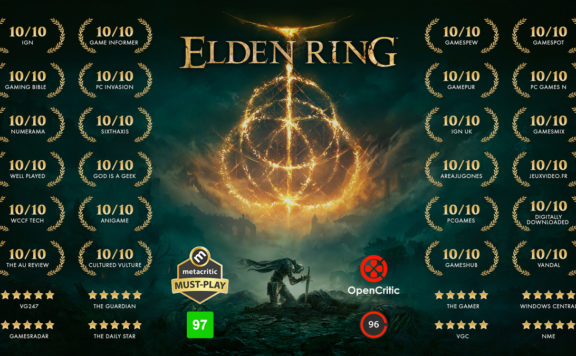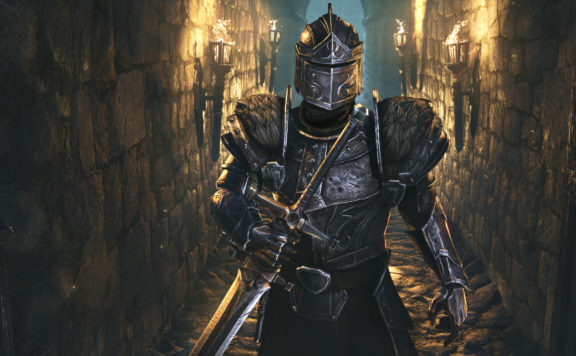Developer Massive Monster (Never Give Up, The Adventure Pals) and famous publisher Devolver Digital have brought forth an interesting take on the roguelike genre that combines dungeon delving with city managing in a single title. Enter Cult of the Lamb, an addictive, charming but creepy project that will allow you to take on the role of a possessed lamb and – you guessed it! – create your own cult in the name of the One Who Waits.
Are you ready? Let the ritual begin, this is our Cult of the Lamb PC review.
Four beings, the Bishops, order the sacrifice of the Lamb due to the existence of the prophecy that the Lamb will summon the One Who Waits, the fifth divine being imprisoned by the Four for his deeds. The little Lamb is tied up and obediently follows to the altar to be slaughtered.
If you expected brave cultists to storm the ritual and save the little one, you’re gravely mistaken. The Lamb dies, her head cut off. But everything goes according to plan: the One Who Waits had foreseen this outcome and placed the Scarlet Crown on the Lamb, turning the hapless prey into a ruthless hunter.
Now the Lamb is out to seek the death of the Four Bishops of the old faith, to pave the way to freedom for her god. On her way to accomplish her goal, the Lamb will create a cult to glorify the One Who Waits and strengthen its influence across the lands. Pity those who stand in her way, for reprisal will be swift and cruel.
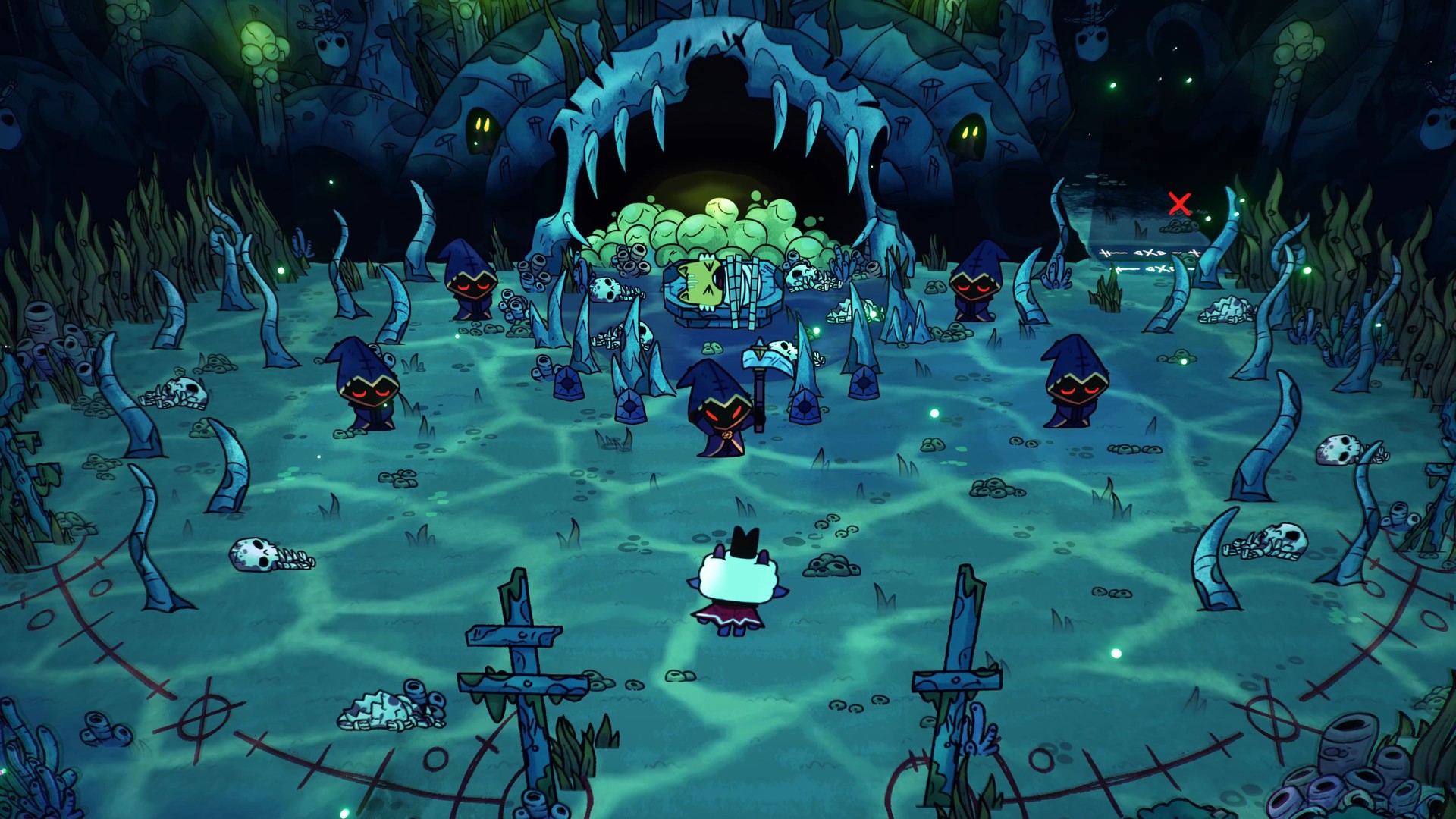
The gameplay of the title can be generally split into two parts. The first being the management of your settlement and the betterment of your cult while the second is related to dungeons. Let’s start at the beginning.
In order to develop the cult and become stronger, to receive new abilities and blueprints for additional buildings, the Lamb needs to spread and strengthen the faith in her god, build up the settlement and invite the faithful into the fold.
You will acquire more followers as you go through the dungeons: buy them from the spider, receive as the reward for killing the followers of the four other Bishops. Progressing through the game will award players with new looks for the faithful: you can swap the names and skins of your followers to fit your style which is quite nice. By the end of the game I have gathered an entire zoo worth of various types of followers.
The heart and center of our Cult is the Church and the Statue of the Lamb. It is those two structures that play the major role in the settlement, allowing for the issue of decrees and laws of faith, conduct of sermons and rituals, and the accumulation of prayer power. As a quick example: feeding your followers with greenery is not very useful, leading to the dampening mood of your Cult. However, one little commandment and your faithful will readily turn vegetarian and become the scourge of salads everywhere.
Your settlement requires food, places for sleep, decorations and even the outhouses. And all of this is for you to build and manage. A single farm with a compost heap and a fertilizer box can supply you with a lot of food as long as you can design it all correctly and not forget to place a scarecrow.
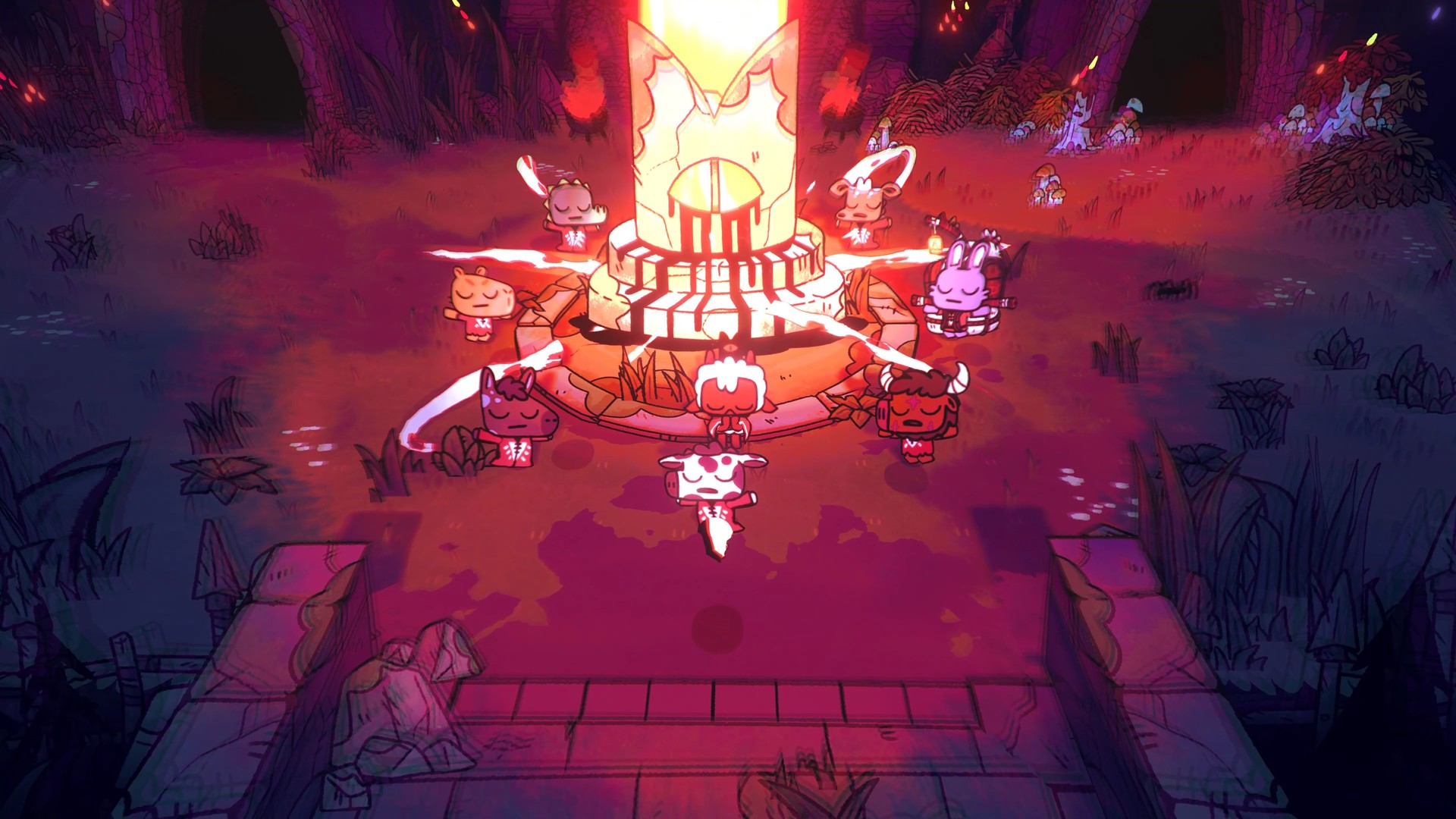
Your settlers need to eat, and you are the one to cook for them. They also can feel sick or poop – and you are the one to clean up after them manually as well until you build a normal outhouse. However, the waste can be used in the garden as a fertilizer… or even as food for those of your followers who are into that.
The cultists will be gathering resources, chopping trees, collecting stone, mining gold, hunting for meat and much more. But every cultist also accumulates Faith. It is through Faith that you can upgrade your Scarlet Crown to receive a variety of abilities and weapons.
Developing your settlement is a cautious process because just a couple of mistakes can give you a giant headache as you search for the needed resources. At first, almost all work is done manually by the Lamb, but overtime the settlers will start helping out and automatize the process which will make it much easier for you. But it won’t be soon.
By the end of the game, the Lamb will only have to conduct Sermons, collect Faith points accumulated by the settlers and get rid of the corpses. After all, what kind of Cult is it if it doesn’t have corpses around?
The faithful will also be asking the Lamb to help with some requests. Someone might ask for a meal made out of the meat of a settler we’ve killed, another one would beg for some excrements to make a dish from or request a dozen flowers, or even to resurrect a recently deceased beloved cultist.
Taking care of these tasks will greatly boost the Faith of your cultists, refusing or failing the quests will upset them or even make them gentiles who will spoil the reputation of the Cult of the Lamb by undermining its authority. You can get rid of them in any way you desire, including killing or re-educating.
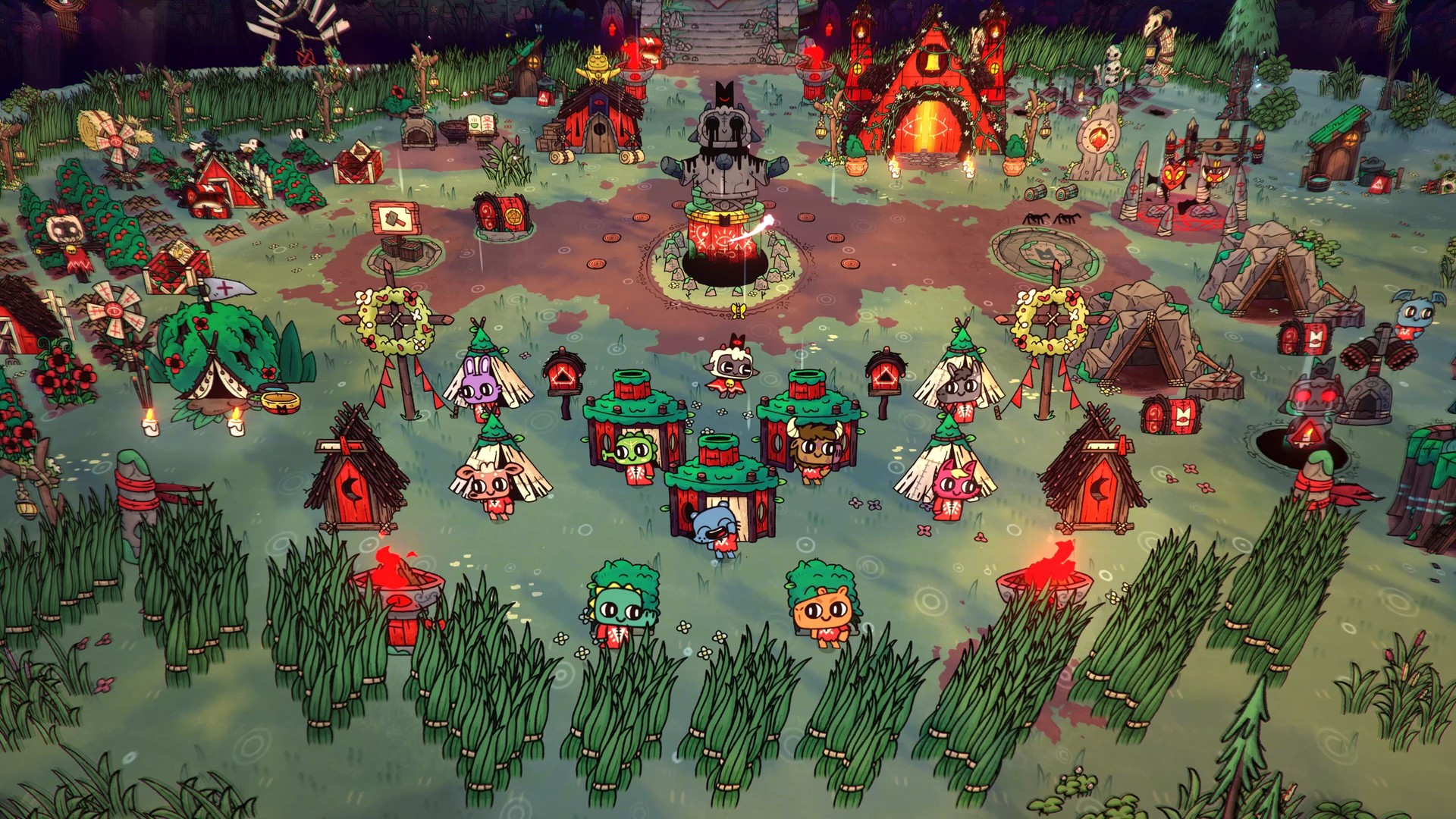
Cultists themselves pray to the Lamb, bringing along Faith points used for the development of her divine (or unholy?) abilities. Their prayers are the main source of unlocking new, better buildings. At first you will only have access to a few ordinary beds placed right on the ground as well as a small minimalistic kitchen, everything else needs to be opened through Faith: outhouses, farms, advanced lodges, etc.
The process also requires a great amount of resources, with the initial ones available through dungeons and brought by cultists as well as received as rewards for killing enemies. For more serious buildings, the second level of resources is required which can be acquired from processing the basic ones at the altar. While in the beginning the Lamb has to be the one converting them, at a later point that job can be given to cultists.
Once a day you can conduct Sermons that will increase the Faith and give extra points to the Lamb that can be used to increase the stats of the Lamb as well as unlock new types of weapons and curses for battles.
The Cult also opens Commandments from the fragments of tablets one can acquire from dungeons, Faith levels or even just from vendors. Every Commandment provides the Cult with passive bonuses. You have to make your choice carefully: love for old people or plain hatred, cannibalism or vegetarianism, bonuses to Faith or the discovery of new Rituals.
Rituals provide the Cult with active bonuses for a limited time, for example you can brainwash everyone and prevent the drop of Faith for a few days. Alternatively, you can arrange a feast that increases the Faith and satisfies Hunger.
The ritual of Fasting can allow you to survive the lack of food, while Ascending a follower can give you an easy way of dealing with an old settler approaching their time or the one who is losing their way. Every ritual has a certain cooldown as well as an entire mountain of resources that is required in order to hold them. For the most part, bones. Lots of bones. Heaps of bones collected from killed enemies, destroyed skeletons and enemy temples.
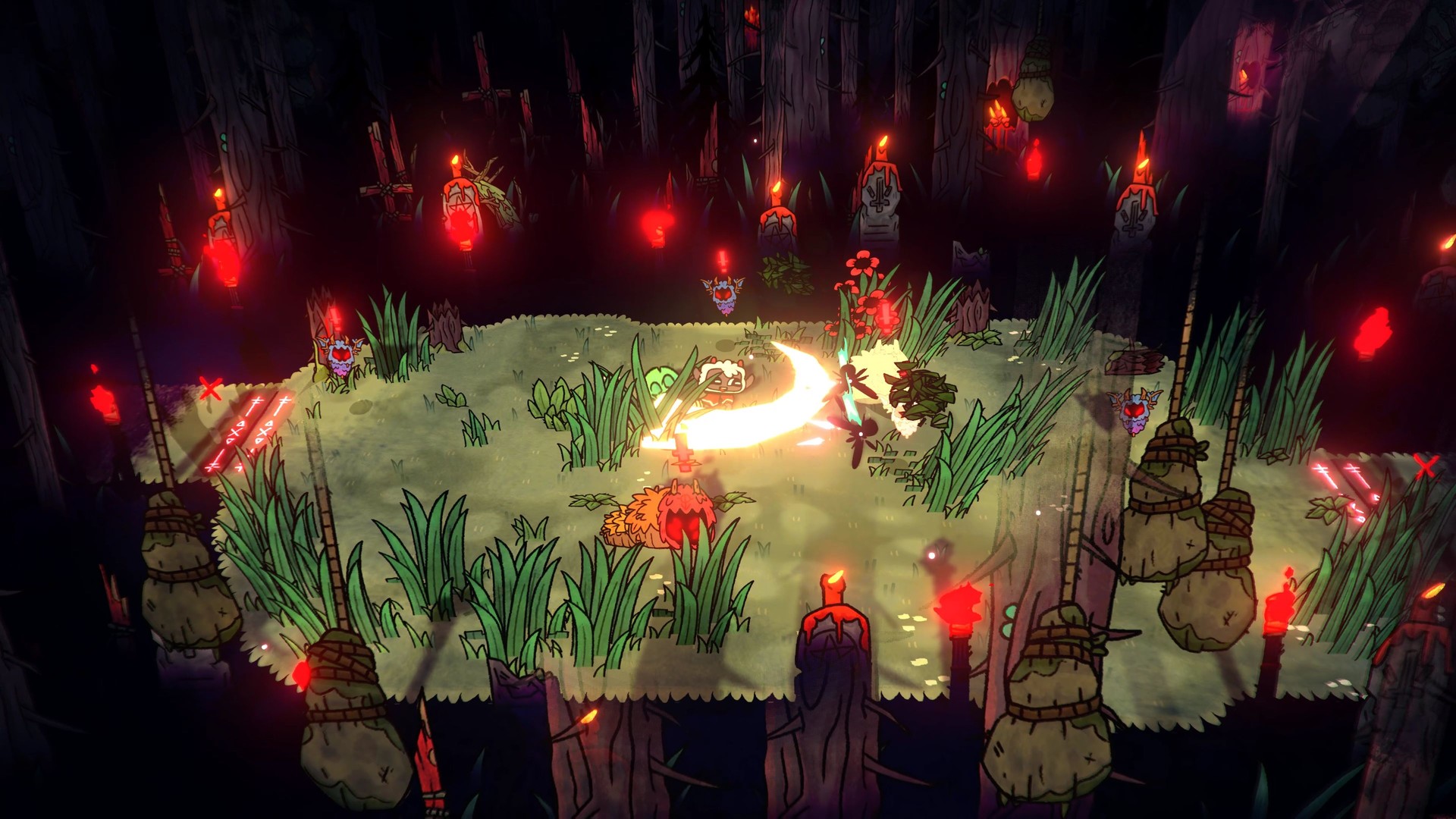
Now onto dungeons.
The game features a random generation of multi-leveled dungeons that will keep even the pickiest players from getting bored with order through slaughter. There are four types of locations, each filled with the general and the unique enemies based on that type.
You are looking for a long haul, first to each of the four enemy Bishops as the ultimate bosses of their respective locations. And we’re talking about more than one run per location, at the very least 4. The first three times you will be facing against Cultists empowered by their gods, while the fourth run will give you an opportunity to face against a Bishop themselves. The battle against a deity will be a harsh experience against less experienced players.
Every mini-location has its own enemies, resources, NPCs, vendors and random events. One can’t simply walk by the enemies to enter the abode of the enemy Bishop, you will have to fight your way through their ranks. A couple dozen hours in, you might really want to sometimes, especially if the location features an especially unpleasant nasty selection.
The zones also feature a variety of resources, trees, ore formations, graves filled with bones, etc. Every thing will be giving its own type of resources, varying from wooden logs to crystal fragments and seeds for the farm.
Every run begins with picking up a random weapon and a random curse that are useless for the most case. You are given an option to swap them during the process of cleaning out the dungeon. During the game, I have noticed only a couple of really good weapons and a few curses such as projectile reflection or invulnerability. As you progress through the game, you will also unlock more Tarot Cards – some essential and some not so much bonuses to the current dungeon run.
I advise you to play on higher levels of difficulty, because even then there will only be 3-4 moments that will give you a pause alongside the battles with the big bosses – the Bishops. Otherwise the game presents a great balance of random and challenge.
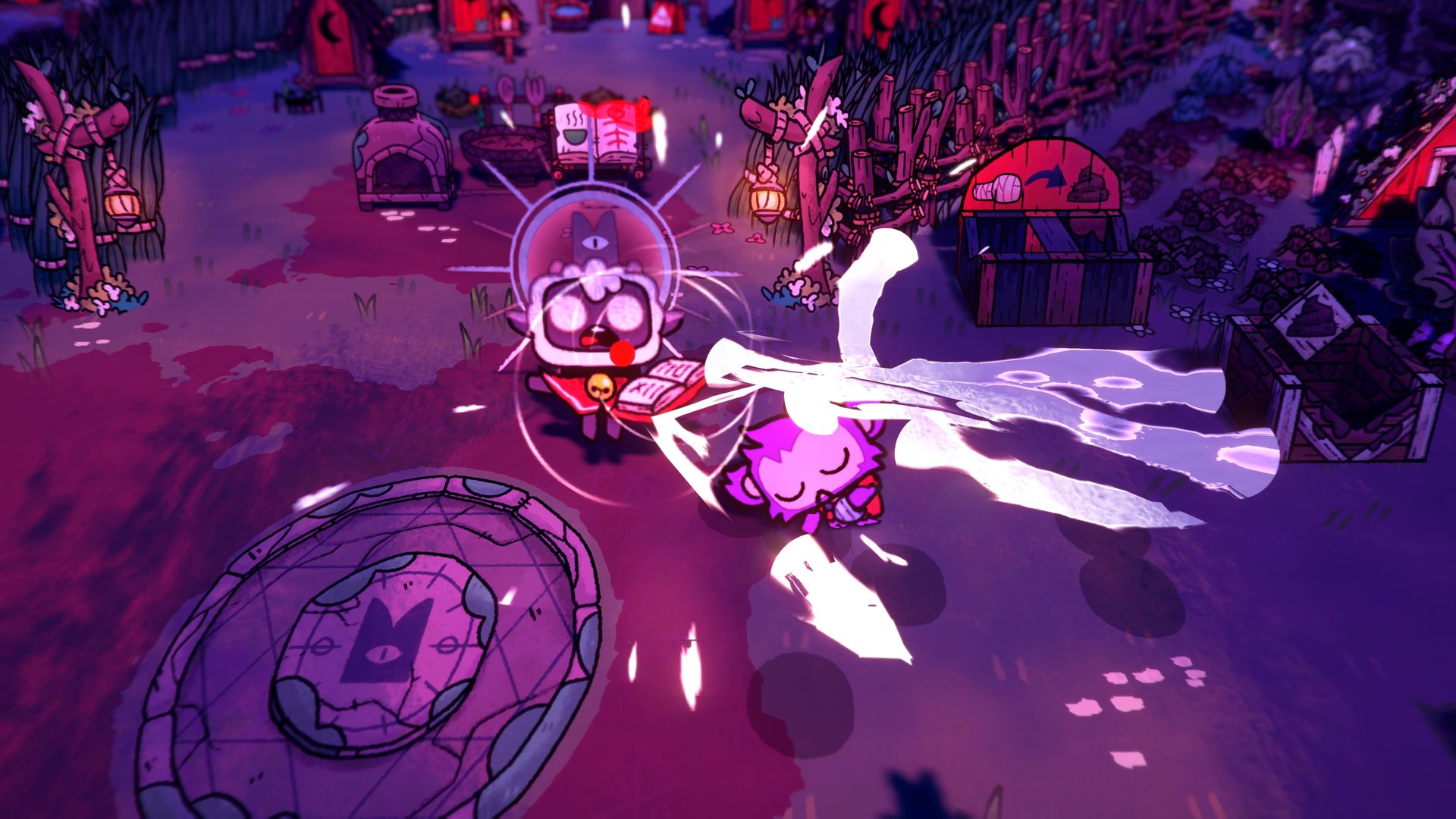
In addition to providing a function of resource supply, follower count increase, etc. the dungeons have certain drawbacks. While you are hacking away in a dungeon, the time does not stop for your settlement. Your followers continue to live, work, demand food, cleaning and sermons.
If you lose, the Lamb returns to the Cult while losing a certain part of the picked resources. Just imagine: after taking on the enemy Bishop, the appropriate location makes the opponents stronger, giving players an opportunity to play through it again for more resources. The further you can get, the more you can acquire: resources, blueprints, follower appearances, etc.
But the mess you will face once you return back to your settlement… Hungry, angry, sick cultists that have lost Faith and are now stealing your gold and leaving the Cult. As you advance further in the game, a number of these issues become non-problems. However, cooking is something way beyond your followers even in the endgame.
You can also unlock new locations and mini-games. Fishing will provide you an extra way to acquire food, the mushroom zone will let you acquire a new Ritual and a bunch of recipes, and the Midas room… is something for you to find out.
Additionally, the game features a mini-game of dice that will be first shown to you by the mentor, the previous chosen of the One Who Waits. He will teach you the rules, give you a chance to try it all out in a couple of test games and then – the casino opens up! You can play for gold against the mentor as well as some of his old friends serving as your guests.
However, in addition to a ghostly chance of picking up some extra gold from this endeavor, there exists a very real possibility of losing it all. After all, this is the game of chance, and the RNG gods might not hold you in as much favor as the One Who Waits. Still, it is a nice opportunity to take a break from clearing a dozen dungeons with a chance of a benefit for your settlement.
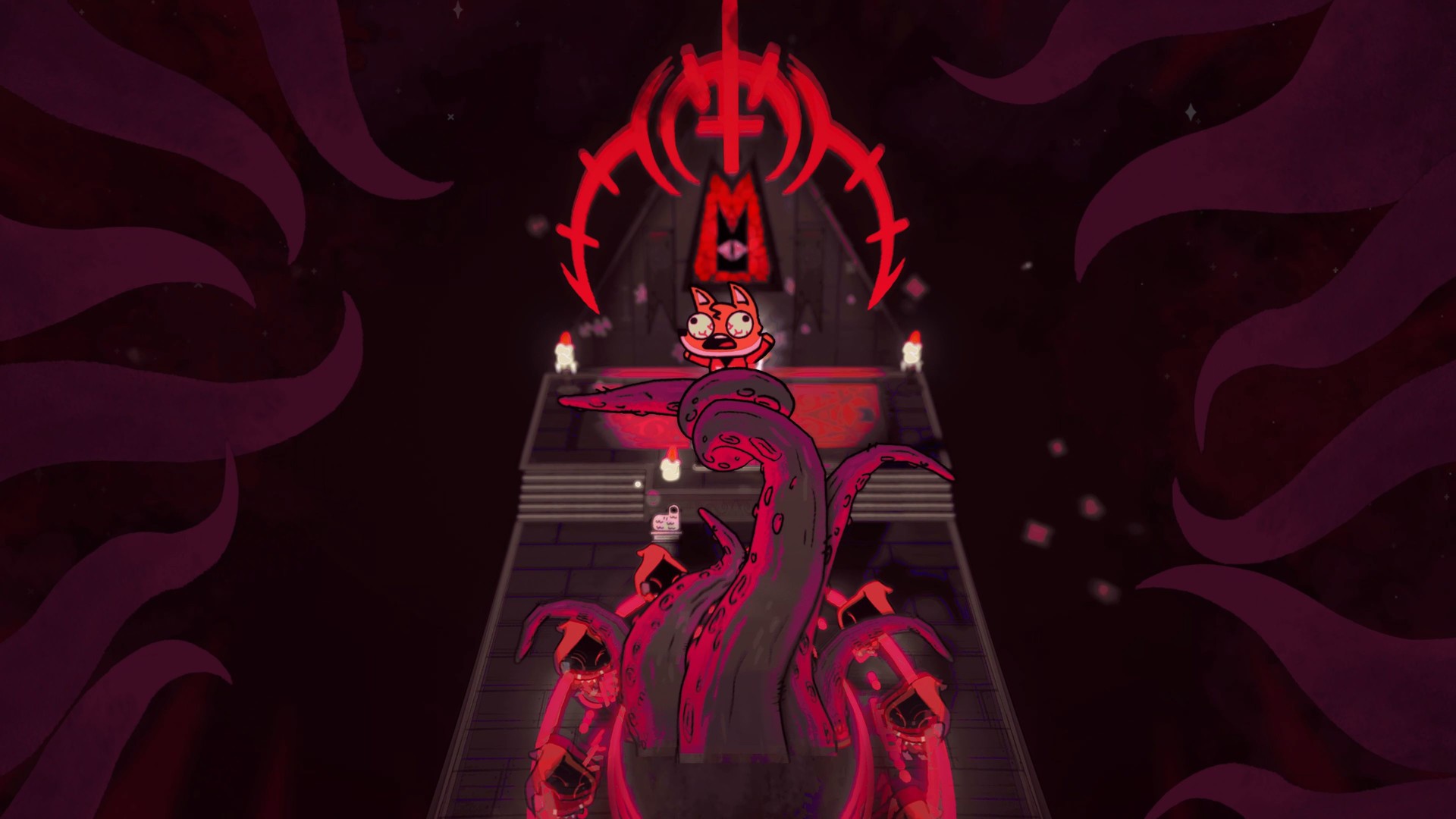
The best for the last.
The game is using a kind of cartoon/puppet visual style. Partially, it reminded me of Happy Tree Friends, a cute but creepy and trashy aesthetic all around. The visuals reflect a great deal of humor, from the design of the Lamb to the appearances of enemies and cultists as well as various animations.
The Lamb is the best example of that. Our little unholy protagonist gets quite angry during the killings and the blows – but it looks so sweet! Meanwhile, the Lamb can also innocently go about everyday deeds such as cooking only to rip out a heart of the enemy deity 10 minutes later. The game is saturated with this kind of disturbing cuteness and humor but it doesn’t go overboard with it.
Besides the visual part, Cult of the Lamb also features a strong sound base. Not very diverse but still quite pleasant soundtrack that will keep you company as you build your cult. The sounds and music are harmoniously integrated into the locations and do not cause you to get sick of them even after many hours of playing.
The game does not feature any innovative mechanics but those that are present are well interwoven. The settlement development is an interesting endeavor, clearing out the dungeons is not boring even after many hours of doing so.
Note: the Steam version of Cult of the Lamb is a verified purchase by the author

